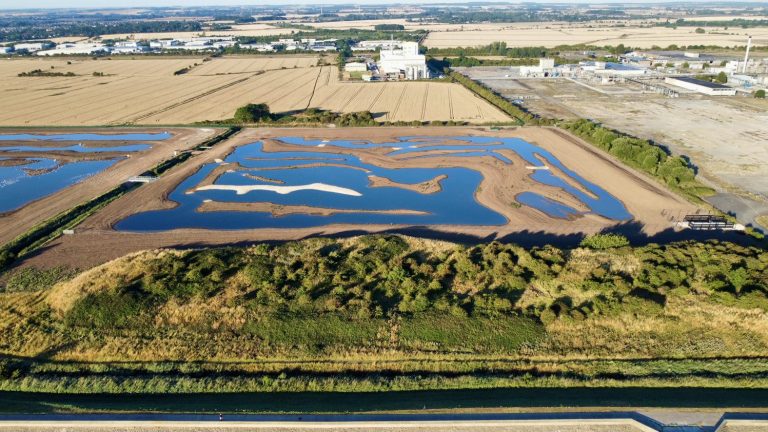East Lindsey District Council has been awarded £5million from Arts Council England’s Cultural Development Fund to support partners in transforming the Embassy Theatre and regenerating Skegness Pier and the surrounding area.
Skegness gets £5m cash injection to revitalise pier and theatre
Law firm Gordons hires senior solicitor as dispute resolution service gears up for further growth
Yorkshire & Humber manufacturers bounce back as clouds lighten
Jobs growth under spotlight as work on updated Local Plan continues
Cash injection of £7m could create 1,200 new jobs in low carbon aircraft manufacture
North Lincolnshire firms to get levelling up cash to create jobs and help the environment
Almost 30 North Lincolnshire businesses across manufacturing, agriculture, retail and hospitality are set to get £141,000 to kickstart a range of projects to create jobs, grow the economy and help the environment.
Money for sustainability projects and digitalisation and marketing schemes will be used to install EV chargers, transition lighting to low-energy LED bulbs and for solar panel installation.
Council leader Rob Waltham said: “This is levelling up in action, enabling North Lincolnshire businesses to embrace sustainability and future-proof their operations. Every £1 of grant funding is being matched with £6 of cash from the businesses – this will help grow the local economy, creating more jobs for residents of North Lincolnshire.
“This latest cash injection comes hard on the heels of £200,000 given to local organisations and charities. It is another fantastic opportunity to directly shape a new, exciting future for North Lincolnshire.”
Twenty-eight businesses will receive a total of £141,154 of funding, which will back projects totalling £723,149, creating dozens of new jobs and safeguarding hundreds more.
It will also cut greenhouse gas emissions and support the council’s ambitious A Green Future strategy, dedicated to protecting and enhancing the environment while growing the economy.
The cash is part of the Government’s UK Shared Prosperity Fund, designed to increase community pride by supporting businesses and helping people achieve better outcomes, access opportunities and lead better lives.
The UKSPF is part of the suite of funds available through the Government’s £2.6bn Levelling Up agenda. It empowers each place to identify and build on their own strengths and needs at a local level.
South Yorkshire supports Rolls-Royce as it researches nuclear power for the Moon
“Partnerships like this, between British industry, the UK Space Agency and government are helping to create jobs across our £16 billion SpaceTech sector and help ensure the UK continues to be a major force in frontier science.”
Nuclear space power is anticipated to create new skilled jobs across the UK to support the burgeoning UK space economy. Rolls-Royce plan to have a reactor ready to send to the Moon by 2029. Relatively small and lightweight compared to other power systems, a nuclear micro-reactor could enable continuous power regardless of location, available sunlight, and other environmental conditions. Rolls-Royce will be working alongside a variety of collaborators including the University of Oxford, University of Bangor, University of Brighton, University of Sheffield’s Advanced Manufacturing Research Centre (AMRC) and Nuclear AMRC. The funding means Rolls-Royce can further strengthen its knowledge of these complex systems, with a focus on three key features of the Micro-Reactor; the fuel used to generate heat, the method of heat transfer and technology to convert that heat into electricity. The potential applications of Rolls-Royce Micro-Reactor technology are wide-ranging and could support commercial and defence use cases in addition to those in space. The aim is to create a world-leading power and propulsion capability for multiple markets and operator needs, alongside a clean, green and long-term power source.Developers must pay their share for roads, schools, and GP surgeries, says Government
Planning application submitted for new solar farm to the east of Hull
New Leeds-based partners for Aon
Aon, a global professional services firm, has announced two new Leeds-based partners in its Wealth Solutions team.
Susannah Calder is the Trustee Retirement Consulting lead for Aon’s Leeds and Manchester offices, a team of around 50 colleagues across both locations. Susannah is scheme actuary to eight pension schemes, ranging in size from £40 million to £4 billion. She is responsible for new business initiatives in the UK Northern region, and set up and co-leads the Trustee Retirement Consulting Women’s Group to inspire future female leaders.
Susannah said: “We have a fantastic team of industry leading experts at Aon, who are all focussed on helping our clients to protect and grow their business. Even after 17 years with Aon, I still find the breadth of the role engaging and challenging and I’m excited about my new role and what the future will bring.”
Jonathan Craven has over 20 years of pensions industry experience and leads a portfolio of Aon’s Retirement clients. With his breadth and depth of expertise, Jonathan helps clients set and execute strategies to solve their most complex pension and benefits-related challenges. Alongside his direct client service roles, Jonathan leads Aon’s Leeds location, which has approximately 250 colleagues delivering client services across Pensions, Health & Benefits and Commercial Risk.

Jonathan said: “I’ve spent my entire 27-year career with Aon and have benefited hugely from its commitment to staff development and the wealth of job opportunities available. This is an organisation that is forward-thinking and where employees are at the heart of the business, so it was wonderful news to be promoted to partner. I’m looking forward to leading the regional pension teams with Susannah, and delivering a first class service for our clients.”












